Comparison of the Prevalence and Trend of Malnutrition between 0-6 Years and 7-11 Years Old Iranian Children: A Systematic Review and Meta-Analysis
- PMID: 33456738
- PMCID: PMC7804871
- DOI: 10.4103/ijpvm.IJPVM_18_19
Comparison of the Prevalence and Trend of Malnutrition between 0-6 Years and 7-11 Years Old Iranian Children: A Systematic Review and Meta-Analysis
Abstract
Background: To plan for decreasing the prevalence of malnutrition among children, reliable data of current status are required. The aim of the present cross-sectional study was to estimate the prevalence and trend of malnutrition among Iranian children.
Methods: PubMed, ISI Web of Science, Scopus, Google Scholar, and Iranian databases including SID and Magiran were searched for studies published prior to October 2017 with MeSH terms of Malnutrition, Nutrition Disorders, Wasting, Stunting, Underweight, Undernutrition, Nutrition, Anthropometry, Weight, and Children and Iran. Three random effect models were applied to estimate the pooled prevalence of underweight, stunting, and wasting. Meta-regression and cumulative meta-analysis were performed. All analyses were also conducted separately for two different age groups including 0-6 years old (preschool) and 7-11 years old (primary school). Seventy-five studies (information of 1,069,815 individuals) were included in the final meta-analysis.
Results: The overall prevalence of underweight, stunting, and wasting was estimated to be 8.4% [95% confidence interval (CI): 7.6-9.1], 14.5% (95% CI: 13.1-15.9) and 5.6% (95% CI: 5-6.2) in children age 0-6 years, and 6.6% (95% CI: 4.8-8.4), 7.3% (95% CI: 5.6-9.1), and 8.3% (95% CI: 6-10.7) in children age 7-11 years, respectively.
Conclusions: The cumulative meta-analysis showed a decrease in the general trend of malnutrition in both preschool and primary school children of Iran. Stunting and wasting were the most common form of malnutrition in Iranian preschool and primary school children, respectively. The decreasing trend of malnutrition was much more noticeable about stunting.
Keywords: Child; Iran; growth disorders; malnutrition; stunting; underweight; wasting.
Copyright: © 2020 International Journal of Preventive Medicine.
Conflict of interest statement
There is no conflict of interest.
Figures
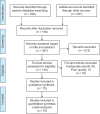
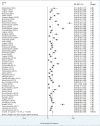

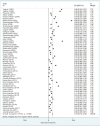

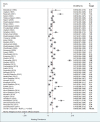




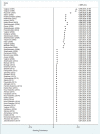



Similar articles
-
Prevalence of underweight and wasting in Iranian children aged below 5 years: a systematic review and meta-analysis.Korean J Pediatr. 2018 Aug;61(8):231-238. doi: 10.3345/kjp.2018.61.8.231. Epub 2018 Aug 15. Korean J Pediatr. 2018. PMID: 30130948 Free PMC article.
-
High burden of undernutrition among primary school-aged children and its determinant factors in Ethiopia; a systematic review and meta-analysis.Ital J Pediatr. 2020 Aug 26;46(1):118. doi: 10.1186/s13052-020-00881-w. Ital J Pediatr. 2020. PMID: 32847566 Free PMC article.
-
A Systematic Review and Meta-Analysis of the Prevalence of Malnutrition Among 6-14-Year-Old Children in Iran.Int J Prev Med. 2022 Nov 23;13:138. doi: 10.4103/ijpvm.IJPVM_564_20. eCollection 2022. Int J Prev Med. 2022. PMID: 36618538 Free PMC article. Review.
-
Prevalence of stunting in Iranian children under five years of age: Systematic review and meta-analysis.Med J Islam Repub Iran. 2018 Oct 25;32:103. doi: 10.14196/mjiri.32.103. eCollection 2018. Med J Islam Repub Iran. 2018. PMID: 30815398 Free PMC article.
-
An Investigation of the Prevalence and Causes of Malnutrition in Iran: a Review Article and Meta-analysis.Clin Nutr Res. 2019 Apr 3;8(2):101-118. doi: 10.7762/cnr.2019.8.2.101. eCollection 2019 Apr. Clin Nutr Res. 2019. PMID: 31089464 Free PMC article.
Cited by
-
The age and cause decomposition of inequality in life expectancy between Iranian provinces: application of Arriaga method.BMC Public Health. 2022 Apr 15;22(1):772. doi: 10.1186/s12889-022-13092-1. BMC Public Health. 2022. PMID: 35428278 Free PMC article.
-
The prevalence of malnutrition in children under 6 in Southern Iran from 2018 to 2023: a population-based study authors.J Health Popul Nutr. 2025 Jan 2;44(1):4. doi: 10.1186/s41043-024-00728-8. J Health Popul Nutr. 2025. PMID: 39748423 Free PMC article.
-
Exploring the determinants of malnutrition in 2-5 year Iranian children using structural equation modeling: national food and nutrition surveillance.BMC Public Health. 2024 Dec 18;24(1):3406. doi: 10.1186/s12889-024-20931-w. BMC Public Health. 2024. PMID: 39696079 Free PMC article.
References
-
- World Health Organization (WHO) UNICEF/WHO/World Bank Group Joint Child Malnutrition Estimates. [Last accessed on 2019 Jan 01]. Available from: https://wwwwhoint/nutgrowthdb/2018-jme-brochurepdfua=1 .
-
- Black RE, Victora CG, Walker SP, Bhutta ZA, Christian P, de Onis M, et al. Maternal and child undernutrition and overweight in low-income and middle-income countries. Lancet. 2013;382:427–51. - PubMed
-
- Mahan LK, Raymond JL, Escott-Stump S. Krause's Food & the Nutrition Care Process – E-Book: Elsevier Health Sciences. 2013
-
- United Nations International Children's Emergency Fund (UNICEF) UNCsF Global Nutrition Report. [[Last accessed on 2018 Apr 01]]. Available from: https://datauniceforg/wp-content/uploads/2016/06/130565-1pdf .
Publication types
LinkOut - more resources
Full Text Sources
